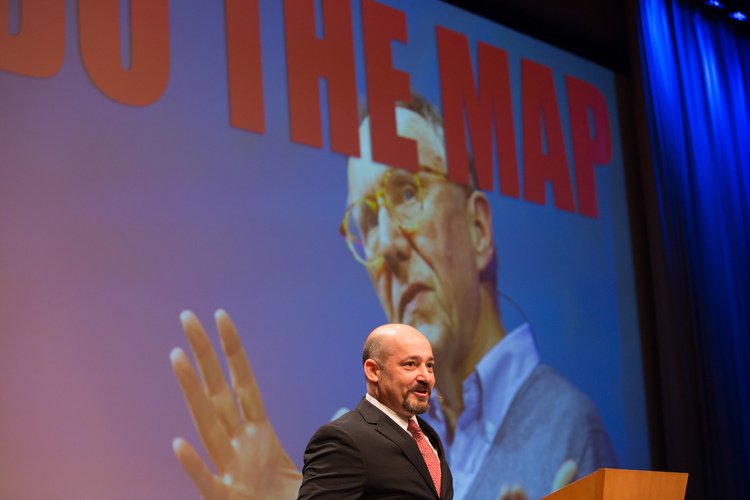If planning requires the posing of alternatives with costs and benefits of each, it is necessary to be able to demonstrate the physical and financial consequences of the status quo extended into the future. This is the second element in the study with some claim to wider relevance.
— Ian McHarg, Design With Nature
The Heritage of GeoDesign
I recently presented at ESRI’s GeoDesign Summit in Redlands CA. It was a humbling experience to present our work with ESRI tools at the mothership of the software. Additionally, there was the added pressure of having the audience of not only Jack Dangermond, but Carl Steinitz. I have to admit, I was so intimidated by Carl at the GSD, that I couldn’t muster the courage to take his studio and the Steintz process. Heck, I’d get anxiety just being in a studio next to his. And now he is in the audience. It’s been a while since I’ve had the feeling, but it came back like it was yesterday. A little GSD PTSD. How to perform in front of THE professor.
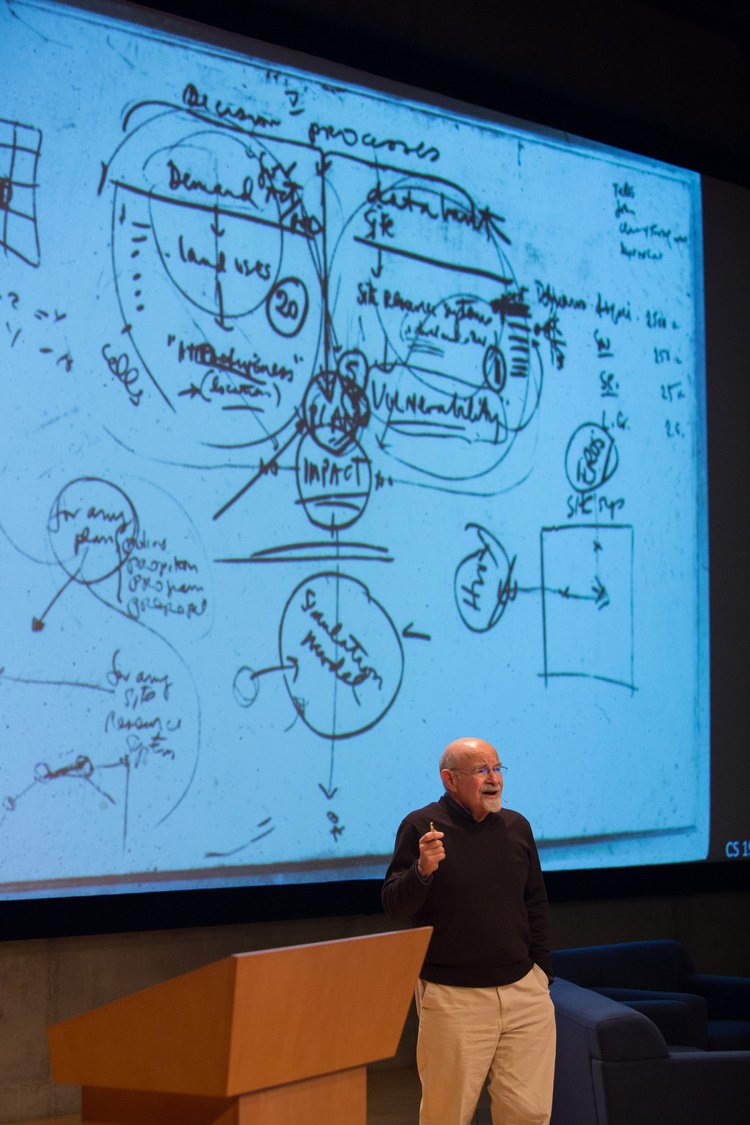
To prepare, I spent the previous month digging into the roots of GIS, and boning up on my McHarg. I have to admit, I never really read Design With Nature. I mostly skimmed it, looked at pictures, and got the overall importance of the book. It was design school after all, we got most of our information from pictures. In the stacks of books that we’d have to read in grad school, this was the one that is the father of thinking of the “ologies” as a series of layers, and designing with what the earth is giving you from a science standpoint. This is the impetus of the GeoDesign profession, ESRI, and how Carl’s studios are run. Perhaps it was my skimming of the book, or maybe it was my lack of life experience at the time, but in reading it prior to the GeoDesign Summit my new eyes gave me a totally different take on McHarg.
So Much More Than Layers
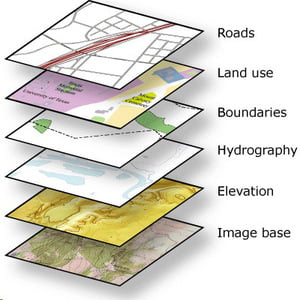
It’s very clear from the preface by Lewis Mumford, that this would provide not only a new way of looking at the world, but it would be released with a great deal of passion. For all of Mumford’s reserve, McHarg would have none, he blazed out with thinking and statements so large, that they’d go to the root of the American culture. Perhaps his Scottish upbringing gave him the clarity to see what was hiding in plain sight? And maybe a predisposition to be nothing, if not direct about it; after all the Scots are a contentious people.
McHarg opens the book with lesson number 1, that you cannot just put data out into the world, but you have to reach people with stories. This is a core principle or Urban3, in that we deliver the community’s data in the community’s story. As McHarg puts it, “(this book is) the best evidence that I have been able to collect, but since evidence tends to be too cold I feel it more honest and revealing to speak first of those adventures which have left their mark and instigated this search.” Indeed, there are lessons to expect, such as the layered analysis of ecology, geology, hydrology, etc.. But aside from the expected, there are ways this book was ahead of its time with regard to transportation, economics, architecture, and planning.
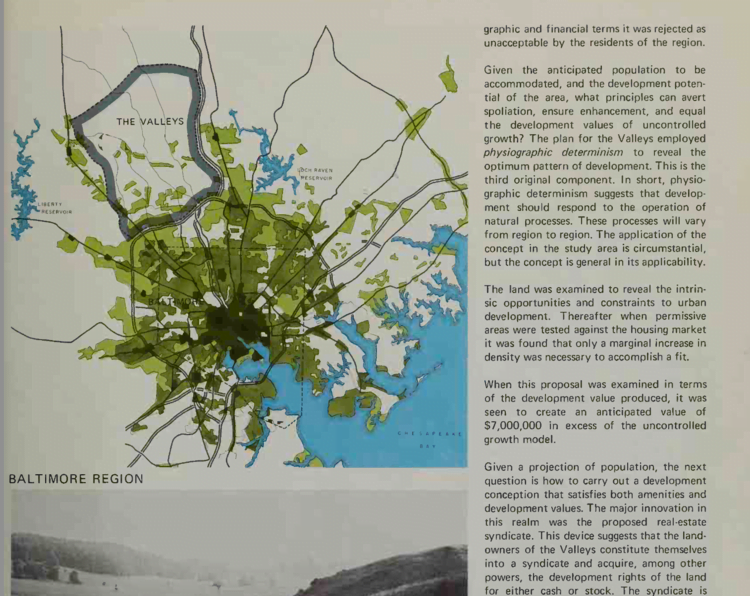
He was railing against the highway engineer in a proto-Walter Kulash way with this gem “A plumber is a most important member of society – our civilization could not endure long without his services: but we do not ask plumbers to design cities or buildings. So too with highways: the engineer is most competent when considering the automobile as a projectile that responds to the laws of dynamics and statics.” Sadly, in many cities, the reckless plumbing attitude continues!
He’d angrily foreshadowed Jim Kunstler’s Geography of Nowhere (and it must be read with a Scottish accent to appreciate the full flavor) “What are the visible testaments to the American mercantile creed – the hamburger stand, gas station, diner, the ubiquitous billboards, sagging wires, the parking lot, car cemetery and that most complete conjunction of land rapacity and human disillusion, the subdivision.” Not only poking in the eye of the suburban landscape, but also taking a swipe at American culture and the mindlessness of the built environment. Its almost like it was made for Kunstler’s blog page. Or how about this one, “It (the city) is the expression of the inalienable right to create ugliness and disorder for private greed, the maximum expression of man’s inhumanity to man.” Sadly, some 40 plus years later, we’d still have to make the case.
Heck, Chuck Marohn wouldn’t be the first to point at the silliness of our infrastructure funding, as McHarg would illustrate “Who are the arrogant, as unmoved by public values and concerns as highway commissions and engineers? There they go, laden with money, offering the enormous bribe of ninety percent of the cost of realizing their narrow purposes.”
There was even an entire chapter devoted to what would eventually evolve into Biomimicry. Though I have to say, this is probably where he struggled the most to articulate the concept. It’s easier to understand with the masterful prose of Janine Benyus. It’s is easy to imagine the knowledge we have yet to learn.
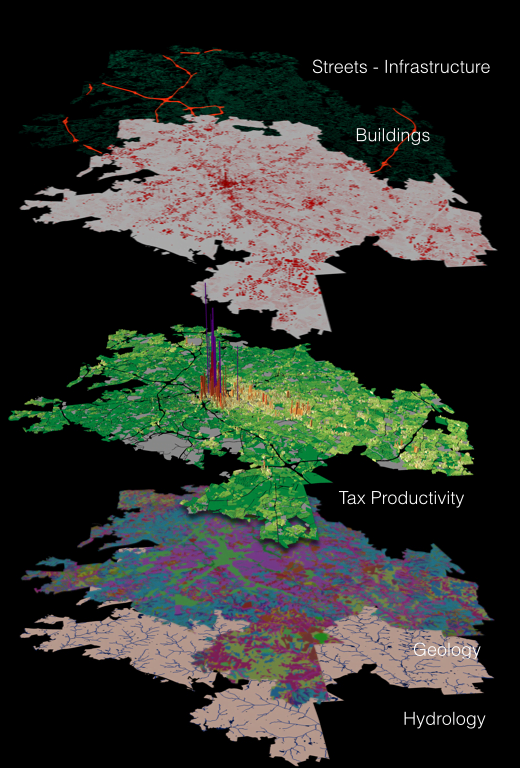
And finally, he even laid the foundation of the work or our firm, underscoring the importance of comprehending how economics drives city design. “We have but one explicit model of the world and that is built upon economics.”, and “Money is our measure”. Even going so far as to demonstrate to the reader how good planning ISmore valuable, he cites his partner’s analysis showing more community wealth gained through good planning. And to think that they did this without Excel or GIS. To understand the built environment, it is imperative that we understand the economic policies driving what is being built. That is the market force, and it isn’t invisible! Its also worth noting McHarg’s cynicism toward the American dream reality and economics. He points out that we favor a short term economic gain, and “the Devil may take the hindmost is the morality.” In other words, if you don’t make it, screw you! He completely nails our immature understanding of economics and the destructive forces in short term thinking. Sadly, in this we haven’t seemed to have come far since the 60’s...
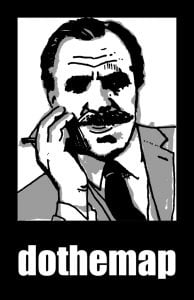
This isn’t to say that McHarg wasn’t without success or that he’d rant in frustration in the face of an unwavering populace. Too often, people would discount him by dwelling on his passion and missing his message and depth of his intelligence. He’d go on to speak at the first Earth Day, presenting his ideas and challenging the status quo. His book would lay the foundation for the NEPA act, and the EIS requirements for Federal projects would take in his prescription for listing impacts. His impact on technology cannot be overstated, as we all have him to thank for GIS, as well as our understanding of wetland and floodplain ecosystems, environmental protection, etc., etc. At the very least, he nudged the needle from a path of destruction that was much more dire than what we face today. It’s hard for my generation to imagine soot covered cities or the Cuyahoga River on fire. We have come a long way since 1969; yet there are still many miles to go to catch up to McHarg.
